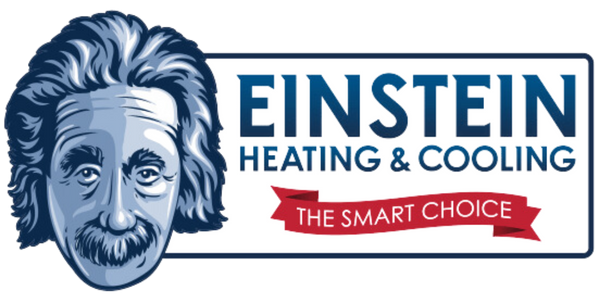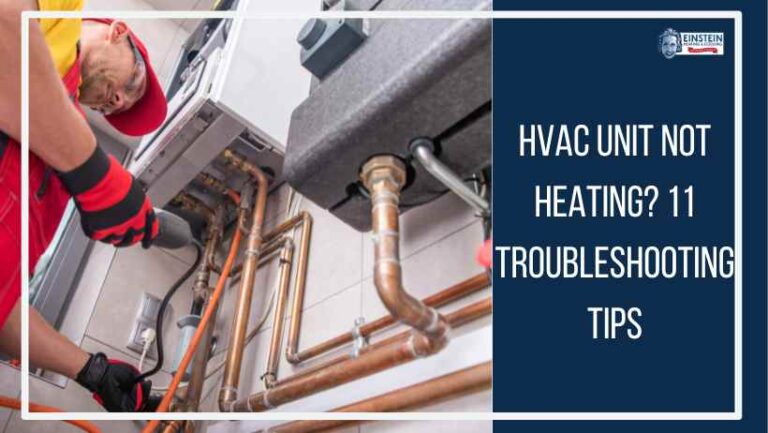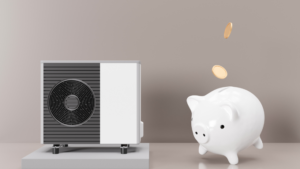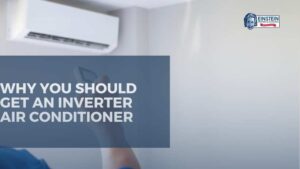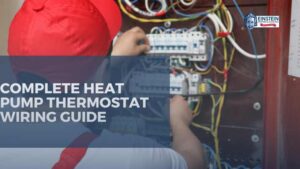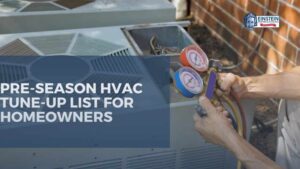As the colder months settle in, the last thing you want is for your HVAC unit to leave you in the cold. This blog post aims to unravel the mystery behind an HVAC unit not heating in Phoenix. From power supply issues to thermostat glitches and maintenance tips with common HVAC misconceptions, we’ll explore each factor to help you restore warmth to your living spaces.
How to Troubleshoot Your HVAC Unit Not Heating
1. Lack of Power Supply
- Tripped Circuit Breakers:
- Electrical circuits safeguard your HVAC unit. Check your circuit breaker panel for any switches in the ‘off’ position. If you find a tripped breaker related to your HVAC system, reset it. This simple step may be all it takes to restore heating functionality.
- Blown Fuses:
- Fuses are the silent protectors of your electrical system. Inspect the fuses in your HVAC unit and replace any that have blown. Address the root cause of blown fuses, such as electrical issues, to prevent future disruptions.
- Faulty Capacitors
- Capacitors in the HVAC system play a crucial role. If they fail, the heating components may not receive the necessary electrical charge. Have a technician inspect and replace faulty capacitors.
2. Thermostat Woes
- Incorrect Settings:
- Start with the basics—ensure your thermostat is set to the desired temperature. Verify that it’s in heating mode if your system offers both cooling and heating options.
- Calibration Issues:
- Thermostat calibration ensures accurate temperature readings. Understand the calibration process outlined in your thermostat’s manual, and follow the steps to fine-tune its accuracy.
- Dead Batteries:
- Sometimes, the simplest issues can lead to a malfunction. Check your thermostat for dead batteries and replace them if needed. A fresh set of batteries might be the remedy your system requires.
3. Pilot Light and Ignition System Problems
- Pilot Light Out:
- If your HVAC unit relies on a pilot light, locate it and follow the manufacturer’s instructions to relight it. An extinguished pilot light is a common culprit for heating issues.
- Ignition System Malfunctions:
- Examine it for malfunctions and irregularities. If you’re unfamiliar with the system, or if problems persist, it’s advisable to seek professional assistance from certified and experienced HVAC technician.
4. Dirty or Clogged Filters
- Importance of Clean Filters:
- Dirty or clogged air filters can reduce airflow, forcing the HVAC system to work harder. Replace or clean air filters according to the manufacturer’s recommendations. Also, ensure that air vents in each room are open and unobstructed. Blocked vents can limit airflow, causing heating issues.
5. Thermostat Calibration
- Understanding Calibration:
- If the thermostat is not calibrated correctly, it may not accurately read the room temperature. Consider recalibrating the thermostat following the manufacturer’s instructions.
- Check Temperature Settings:
- Ensure they are set to a temperature higher than the current room temperature. Verify if the thermostat is in the heating mode and not set to cooling or fan-only mode.
6. Regular Maintenance Tips
- Seasonal Maintenance Checklist:
- Seasonal maintenance is crucial to ensure the optimal performance and longevity of your HVAC (Heating, Ventilation, and Air Conditioning) unit.
- For winter, you must replace air filters, check thermostat settings, inspect and clean vents, inspect and lubricate blower motors, and monitor all gas connections. Regularly maintaining your HVAC unit can extend its lifespan, improve energy efficiency, and enhance your indoor comfort throughout the year.
- DIY Maintenance:
- Take charge of simple maintenance tasks, from cleaning components to checking for visible issues. Proactive maintenance can prevent future heating problems.
- Changing Filters:
- Begin by changing or cleaning your air filters regularly. Clogged filters hinder airflow, reducing the efficiency of your system. Follow the manufacturer’s recommendations for the type of filter and the frequency of replacement. This simple step goes a long way in preserving air quality and system efficiency.
- Inspecting Thermostat Accuracy:
- Check the accuracy of your thermostat. A thermostat that misreads temperatures can lead to energy waste and discomfort. Use a separate thermometer to compare readings. If there’s a discrepancy, consider recalibrating the thermostat or consulting a guide on how to find “HVAC technician near me.”
- Cleaning and Clearing Vents and Registers:
- Ensure that all vents and registers are free from obstructions. Furniture, curtains, or other items can block airflow, forcing the system to work harder. Regularly vacuum and dust these areas to maintain optimal airflow throughout your home.
- Checking for Leaks in Ductwork:
- Inspect your ductwork for any signs of leaks or damage. Leaky ducts can result in heated air escaping into unconditioned spaces, leading to energy wastage. Seal any visible gaps or hire a professional to address more complex ductwork issues.
- Examining the Pilot Light and Ignition System:
- For systems with a pilot light or ignition system, inspect these components regularly. A properly functioning pilot light is crucial for ignition, and any irregularities should be addressed promptly. If you’re unsure or encounter issues, seek professional assistance.
- Cleaning Coils and Heat Exchanger:
- Clean the evaporator and condenser coils as well as the heat exchanger. Over time, these components can accumulate dirt and debris, reducing efficiency. Use a soft brush or vacuum cleaner to gently remove buildup, ensuring unrestricted heat exchange.
7. Signs It’s Time For A Professional Inspection
- No Warm Air Flow:
- If your HVAC unit is running, but there’s no warm air coming from the vents, it suggests a potential issue with the heating system that requires professional attention.
- Unusual or Strange Noises:
- Unusual sounds such as banging, clanking, or whistling during the heating process may indicate mechanical problems or loose components. HVAC professionals can identify and address these issues.
- Uneven Heating Throughout the Home:
- If some rooms are significantly colder than others, it may indicate problems with the distribution of heat. HVAC professionals can assess and balance the system to ensure consistent heating.
- Frequent Cycling On and Off:
- An HVAC system that frequently turns on and off (short cycling) could be a sign of issues with the thermostat, sensors, or other components. Professionals can diagnose and rectify the problem.
8. Insulation and Air Leaks
- Impact on Heating Efficiency:
- Inadequate insulation in walls, ceilings, or windows can contribute to heat loss. Consider improving insulation to enhance the efficiency of your HVAC system.
- DIY Insulation Checks:
- Upgrade or replace worn-out weatherstripping around doors and windows to prevent drafts and improve energy efficiency. In homes with cavity walls, check for insulation material within the wall spaces. Consider consulting blueprints or seeking professional assistance from Einstein Heating and Cooling if unsure.

9. System Age and Upgrades
- Signs of Aging Systems:
- Over time, various components within the HVAC system may degrade, as shown by unusual noises, rusting, and uneven heating. Bearings in the HVAC system’s components can wear out over time, leading to operational issues. Lubricate or replace worn-out bearings as needed. Consider upgrading or replacing aging components to ensure consistent heating performance.
- Benefits of Upgrading:
- Upgrading to a newer, more energy-efficient system can ensure a more comfortable indoor environment. Advanced technology allows for precise regulation of temperature and humidity levels, eliminating hot and cold spots within your home. Upgraded HVAC units often come with noise-reduction features, providing a quieter and more peaceful living space.
10. DIY vs. Professional Repairs
- When to DIY:
- One of the simplest and most effective DIY tasks is replacing the air filter. Regularly changing the filter, typically every 1-3 months, helps maintain proper airflow and improves the overall efficiency of the HVAC system.
- A clogged condensate drain can lead to water damage and reduced efficiency. DIY cleaning involves locating the drain line and using a mixture of water and vinegar to clear any blockages.
- While DIY HVAC unit repairs can address minor issues and routine maintenance tasks, it’s crucial to recognize the limitations of your expertise. Knowing when to DIY and when to seek professional assistance ensures the safety, efficiency, and longevity of your HVAC system.
- When to Call a Professional:
- If you suspect electrical problems, such as tripped circuit breakers, exposed wires, or issues with capacitors, it’s crucial to seek professional assistance. Electrical work can be hazardous without the necessary expertise.
- Issues with the ignition system or a pilot light that won’t stay lit can indicate complex problems. These require professional attention to ensure safe operation of gas-powered furnaces.
11. Energy Efficiency Tips
- Regular System Maintenance:
- Schedule regular maintenance checks for your system to avoid HVAC repair in Phoenix. A well-maintained system operates more efficiently, reducing energy consumption and preventing potential breakdowns. Clean or replace filters as recommended, and ensure all components are in good working order.
- Programmable Thermostats:
- Invest in a programmable thermostat to optimize your heating settings. Programming your thermostat to lower temperatures during periods of inactivity or when you’re away from home can result in significant energy savings. This not only reduces your environmental impact but also lowers your utility bills.
- Sealing Air Leaks:
- Addressing drafts and sealing air leaks in your home contributes to enhanced energy efficiency. Inspect windows, doors, and other potential sources of air leakage. Weatherstripping and caulking are effective measures to seal gaps, keeping warm air in and cold air out.
- Proper Insulation:
- Adequate insulation is key to maintaining a comfortable and energy-efficient home. Ensure that your walls, floors, and attic are properly insulated to prevent heat loss. Investing in quality insulation pays off in the long run by reducing the workload on your heating system.
- Upgrade to Energy-Efficient Equipment:
- Consider upgrading to energy-efficient HVAC equipment. Modern systems are designed to meet higher energy efficiency standards, providing improved performance and lower energy consumption. Look for systems with high Annual Fuel Utilization Efficiency (AFUE) ratings for furnaces and Seasonal Energy Efficiency Ratio (SEER) ratings for air conditioners.
- Optimal Temperature Settings:
- Set your thermostat to an optimal temperature that balances comfort with energy savings. Lowering the thermostat by just a few degrees during the winter can result in substantial energy conservation. Dress warmly and use blankets to stay comfortable without relying solely on your heating system.
- Utilize Sunlight:
- Leverage natural sunlight to your advantage. Open curtains and blinds during the day to allow sunlight to warm your home naturally. Closing them at night provides an additional layer of insulation against the cold. This simple practice reduces the need for artificial heating during daylight hours.
- Proper Ventilation:
- Ensure proper ventilation in your home. Clean vents and ducts allow for efficient airflow, preventing the HVAC system from working harder than necessary. Poor ventilation can lead to uneven heating and increased energy consumption.
- Timely Repairs:
- Address any issues promptly. A malfunctioning component can force your HVAC system to work harder, consuming more energy. Timely repairs and a proper HVAC maintenance not only prevent further damage but also contribute to sustained energy efficiency.
- Educate Household Members:
- Educate your household members on energy-efficient practices. Encourage turning off lights, electronics, and appliances when not in use. Emphasize the importance of collectively adopting energy-saving habits to reduce overall energy consumption.
- Smart Technology Integration:
- Explore smart technologies that enhance energy efficiency. Smart thermostats, for example, can learn your preferences and adjust heating schedules accordingly. Additionally, some systems allow remote monitoring and control, enabling you to optimize energy usage even when you’re away from home. If your current AC does not allow smart technology to be integrated, a new AC installation in Phoenix may save you money in the long run.
- Regular Audits and Assessments:
- Conduct periodic energy audits or assessments to identify areas for improvement. Professional assessments can pinpoint energy inefficiencies and provide tailored recommendations for optimizing your home’s energy performance.
Common Misconceptions of HVAC Unit Not Heating
Dispelling Myths:
We clarify any misunderstandings on HVAC units that might lead to improper troubleshooting and potentially worsen the problem.
- Misconception 1: “Bigger is Better” for Heating Systems:
- One prevalent misconception is that a larger heating system will provide better and faster warmth. In reality, an oversized system can lead to short cycling, where the unit turns on and off frequently, reducing efficiency and potentially causing wear and tear. Right-sizing your heating system according to your home’s specifications is key for optimal performance.
- Misconception 2: “Closing Vents Saves Energy”:
- Some believe that closing vents in unused rooms conserves energy by directing more heat to occupied areas. However, modern HVAC systems are designed to work with a balanced airflow. Closing vents can disrupt this balance, causing pressure imbalances and leading to decreased efficiency. It’s best to keep vents open for proper system function.
- Misconception 3: “Turning the Thermostat to the Max Heats Faster”:
- Many think that cranking the thermostat to the highest setting will expedite the heating process. However, thermostats operate by maintaining a set temperature, and setting it higher won’t heat your home faster. It will only lead to overshooting the desired temperature and potential energy waste.
- Misconception 4: “You Don’t Need Regular Maintenance”:
- Some homeowners believe that as long as the system is running, there’s no need for regular maintenance. In truth, regular maintenance is essential for preventing breakdowns, ensuring optimal efficiency, avoiding the top 5 AC problems, and extending the lifespan of your HVAC unit. You may search “hvac service Phoenix” if maintenance is neglected, and repairs can be costly.
- Misconception 5: “Closing Doors and Vents in Unused Rooms is Efficient”:
- Closing doors and vents in unused rooms seems like a logical energy-saving strategy. However, this can disrupt the airflow and create pressure imbalances, forcing the HVAC system to work harder. It’s better to maintain a consistent airflow throughout the house for overall efficiency.
- Misconception 6: “All Filters Are the Same”:
- Assuming that all air filters are interchangeable is a common misconception. Filters vary in terms of material and efficiency. Using the wrong type or neglecting filter replacement can lead to reduced airflow, increased energy consumption, and compromised indoor air quality. It’s essential to use the recommended filter and replace it regularly.
- Misconception 7: “It’s Normal for Heating Systems to Always Make Noise”:
- While some operational noise is typical, excessive or unusual sounds can indicate underlying issues. Ignoring strange noises, such as banging, clanking, or whistling, under the assumption that they’re normal, can lead to more significant problems. Unusual sounds should prompt investigation and, if necessary, professional attention from Einstein Heating and Cooling.
- Misconception 8: “Closing the Registers in Unused Rooms Saves Energy”:
- Closing registers in unused rooms may seem like a strategy to save energy, but it can disrupt the balance of the HVAC system. The system is designed to distribute air evenly, and blocking vents can lead to increased pressure and reduced efficiency.
- Misconception 9: “Thermostat Location Doesn’t Matter”:
- The thermostat’s location plays a crucial role in accurate temperature readings. Placing it near heat sources, windows, or drafts can lead to inaccurate readings, causing the system to operate inefficiently. Optimal thermostat placement is essential for precise temperature control.
- Misconception 10: “DIY Repairs Always Save Money”:
- While DIY troubleshooting has its place, assuming that all repairs can be handled independently may lead to further damage and increased costs. Some issues require professional expertise to diagnose and address effectively. Knowing when to seek professional HVAC help is crucial for preventing more extensive problems.
Conclusion
Restoring warmth to your living spaces in Phoenix involves a systematic approach. Whether you choose the DIY route or seek professional help, this guide equips you with the knowledge needed to tackle the challenge of a non-heating HVAC unit. If problems persist, it is advisable to seek professional assistance from Einstein Heating and Cooling to diagnose and fix more complex issues. Remember, a well-maintained HVAC system not only provides comfort but also contributes to energy efficiency and lower utility bills.
